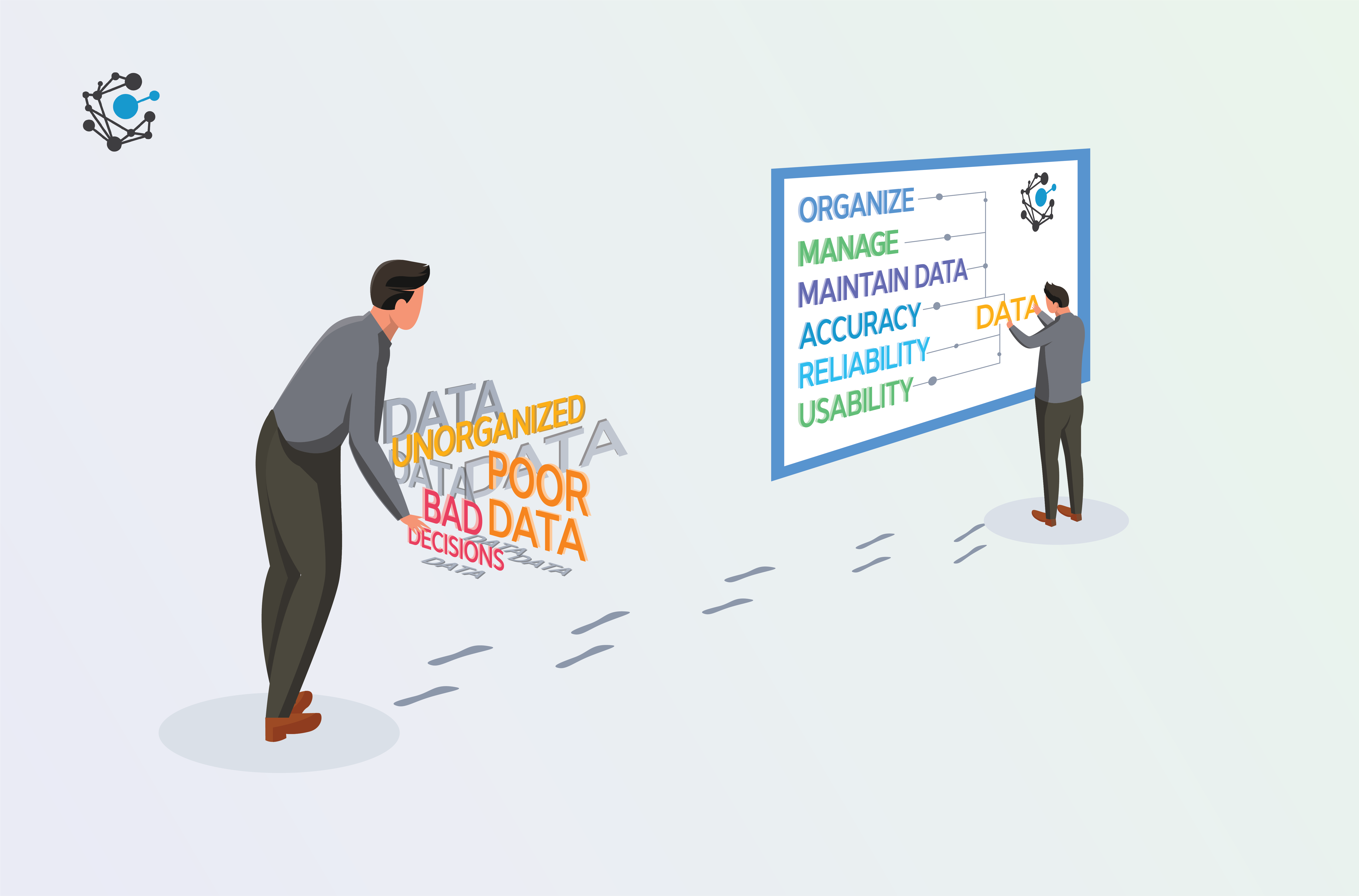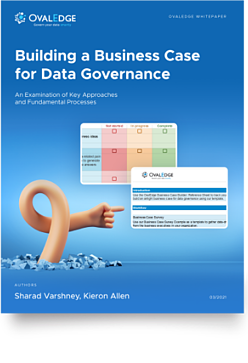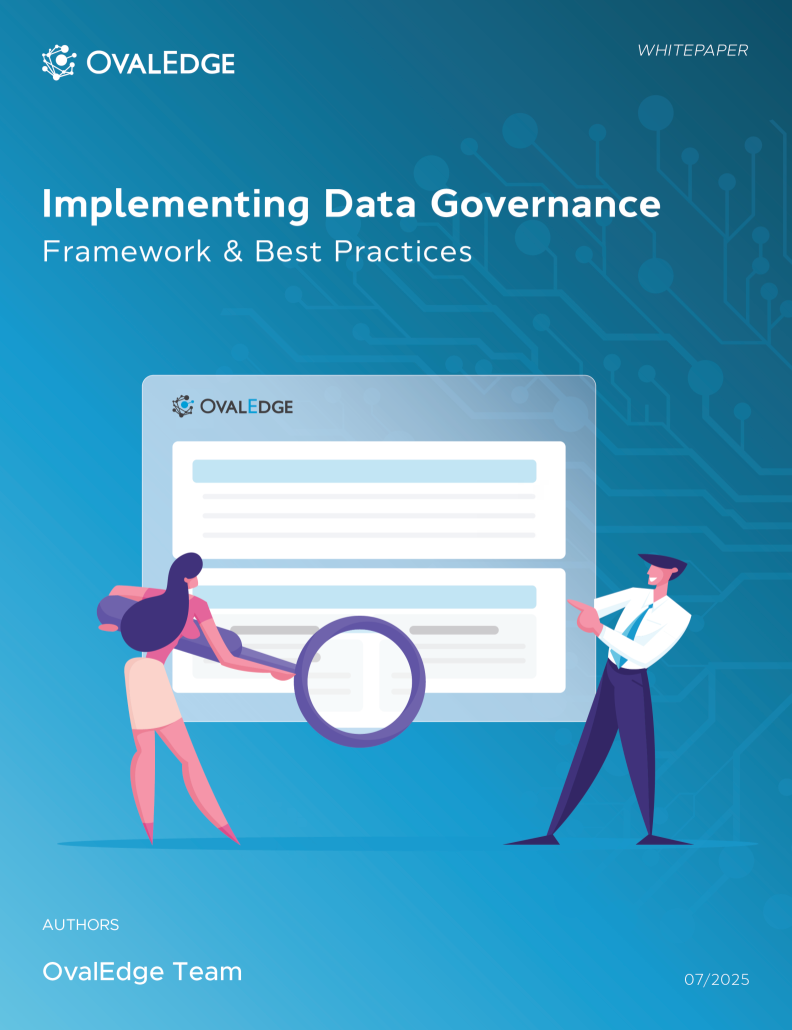Table of Contents
What is Data Curation?
In a museum, the curator collects, organizes, manages, and preserves valuable art and artifacts. And without them, museums would just be big rooms full of bored and confused tourists.
If you’re reading this blog, you probably don’t own a museum. But you probably do store lots of data and want to know how to collect, organize, manage, and preserve that data efficiently and securely.
This is where data curation becomes your best friend!
How you manage and organize your data can have a huge impact across your business, but ensuring quality and reliability is challenging.
Data curation gives you a system to achieve this, focused on maintaining data accuracy, reliability, and usability throughout its life cycle.
In this blog post, we’ll delve into data curation in more detail and answer the following questions:
- What is data curation?
- Why is data curation important?
- How is it related to data governance?
- What are the best practices for data curation?
By the end of this article, you’ll have a clear understanding of what data curation is and why it’s so important to get it right.
What is Data Curation?
Data curation is a way to organize, manage, and maintain data through its life cycle to ensure accuracy, reliability, and usability.
The first part of the process is to identify and collect the data from the different data sources. It’s likely nowadays that your data is spread across different storage solutions, apps, platforms, etc.
Once you’ve collected this data, the next step is to clean it by identifying and removing duplicates, populating missing values, and correcting issues. This will prevent errors later on and ensure the data is accurate and consistent.
After that, the data needs to be transformed so all the data is in a consistent format. This allows you to merge, enrich, and add to the data much easier.
This transformed data is then organized and stored so that it’s easily accessible going forward. A key part of this process is documenting metadata and establishing data storage and access standards. This ensures the data is searchable and helps secure the data from loss or corruption.
The final piece of the curation puzzle is preservation. The focus here is to ensure that the data remains accessible and usable over time. To achieve this, you need to have mechanisms in place for archiving and storing data, maintaining durability, and creating reliable backups of your data.
Preservation also includes strategies for migrating data to new technologies or platforms in the future, guaranteeing long-term accessibility.
Ultimately, the goal of data curation is to ensure that high-quality data is easily available for decision-making. We do this by ensuring the data is accurate, reliable, and accessible.
That way, organizations can accurately analyze the data, make better-informed decisions, and improve operational efficiency.
The Importance of Data Curation
In today’s data-driven world, the importance of data curation can’t be overstated.
Solid data curation practices will provide a smorgasbord of benefits to your company, which will all lead to better decision-making, as well as improved operational efficiency.
Data quality
Your analysis is only as good as the quality of your data, and data curation is a key part of improving this quality.
By implementing curation practices like data cleaning and transformation, you can give yourself the best chance of ensuring accurate and consistent data.
This massively improves your data quality, which leads to more reliable analysis and decision-making. Without this, you simply can’t have confidence that your data is good enough.
Related Post: What is Data Quality? Dimensions & Their Measurement
Improved efficiency and productivity
Introducing effective data curation can also increase your company’s efficiency and productivity.
By organizing and storing your data in a more accessible way, you can reduce the time and effort needed to both find and use the data. This will improve your operational efficiency and reduce the costs associated with managing your company's data.
Dire consequences
On the flip side, the dangers of not having good data curation can be severe!
Businesses that don’t implement robust data curation systems and processes are at great risk of making bad decisions. This is because big decisions are dependent on good data.
So, if you make decisions based on inaccurate or incomplete data, you’re playing Russian Roulette with your reputation and bottom line.
You’re far more likely to miss key opportunities, and you’ll be unable to make reliable forecasts.
This can be especially damaging if you’re in high-risk industries like healthcare and finance. In these industries, one small mistake or bad decision could cost people their livelihood or even their lives!
How does Data Curation relate to Data Governance?
Before we delve into the links between the two, here is the definition of data governance from our practical guide:
Data governance is organizing, securing, managing, and presenting data using methods and technologies that ensure it remains correct, consistent, and accessible to verified users.
While data curation and data governance are two different concepts, they are very closely related.
In fact, it’s almost impossible to carry out effective data governance without good data curation practices. This is because they help you know your data is accurate, consistent, and reliable.
If anything, data curation could be considered a subset of data governance, focused specifically on the managing and organizing of your data.
Making a Roadmap for Successful Data Governance? Download Roadmap template
Another important way data curation is key to data governance is with the huge impact it has on data quality.
Your data governance policies should already be designed to validate that your data is accurate, complete, and consistent. The cleaning, transformation, and integration parts of data curation are essential for achieving this data quality.
If you tie this to your data governance standards, your data will always maintain a high quality that matches your company's expectations.
One more key way data curation doesn’t just link to data governance but actively makes it easier is in the management of metadata.
You need to easily access the right data to carry out rigid data governance, and the metadata management we’ve already discussed in this article facilitates this.
Metadata is essentially information and context that makes the data usable and accessible. So, by curating your data into a data catalog, and capturing the right metadata, you’re making your data easy to find and use.
In conclusion
Data curation is an invaluable process that has its own standalone benefits and feeds into your company’s larger data ecosystem.
It’s a way to organize, manage, and maintain your data throughout its life cycle, which ensures accuracy, reliability, and usability.
It involves:
- Identifying data sources
- Cleaning and transforming the data
- Organizing and storing it
- Preserving
It is also closely tied to data governance, with data curation being a key player in the larger data governance game, so much so that it’s impossible to implement effective data governance without good data curation practices.
All of which results in better data, better analysis, and—ultimately—better decision-making across your business
What you should do now
|
OvalEdge recognized as a leader in data governance solutions
.png?width=1081&height=173&name=Forrester%201%20(1).png)
“Reference customers have repeatedly mentioned the great customer service they receive along with the support for their custom requirements, facilitating time to value. OvalEdge fits well with organizations prioritizing business user empowerment within their data governance strategy.”
.png?width=1081&height=241&name=KC%20-%20Logo%201%20(1).png)
“Reference customers have repeatedly mentioned the great customer service they receive along with the support for their custom requirements, facilitating time to value. OvalEdge fits well with organizations prioritizing business user empowerment within their data governance strategy.”
Gartner, Magic Quadrant for Data and Analytics Governance Platforms, January 2025
Gartner does not endorse any vendor, product or service depicted in its research publications, and does not advise technology users to select only those vendors with the highest ratings or other designation. Gartner research publications consist of the opinions of Gartner’s research organization and should not be construed as statements of fact. Gartner disclaims all warranties, expressed or implied, with respect to this research, including any warranties of merchantability or fitness for a particular purpose.
GARTNER and MAGIC QUADRANT are registered trademarks of Gartner, Inc. and/or its affiliates in the U.S. and internationally and are used herein with permission. All rights reserved.



.webp)


